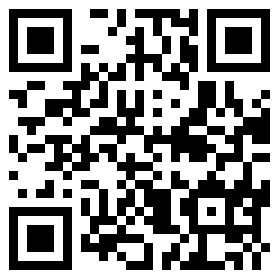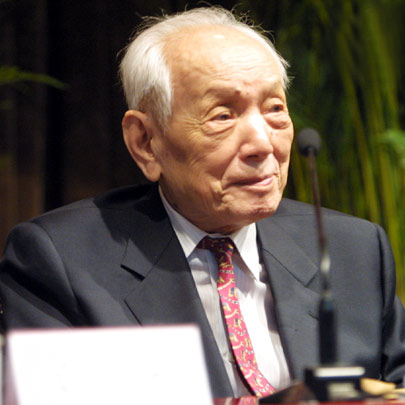中国数学会是中国数学工作者的学术性法人社会团体,是中国科学技术协会的组成部分。中国数学会的宗旨是团结广大数学工作者,为促进数学的发展,繁荣我国的科学技术事业,促进科学技术人才的成长与提高...
香港《南华早报》报道丨周向宇院士对中国古代数学的研究与发现
发布时间:2025-04-14
Hundreds of years before a Greek scholar outlined his proof of the Pythagorean theorem(勾股定理), ancient Chinese scholars proved it using just 17 characters, a renowned Chinese mathematician highlighted in a recent lecture.
Zhou Xiangyu(周向宇), a member of the Chinese Academy of Sciences (CAS) and former director of itsInstitute of Mathematics, delivered the lecture at the National Science Communication Centre last Friday, where he spoke about China’s rich mathematical heritage.
“Ancient Chinese mathematics is a treasure trove, concise in language yet profound in meaning. Many more insights await discovery,” Zhou told Science and Technology Daily on Sunday.
He believes ancient Chinese books contain theories that significantly influenced modern mathematics and contributed to Chinese language and culture. Among these theories, the proof of the Pythagoreantheorem is particularly fascinating.
The theorem defines the relationship between the three sides of a right-angled triangle, stating that the square of the hypotenuse equals the sum of the squares of the other two sides.
In Western history, the earliest written proof appears in Elements(《几何原本》)by Euclid, a Greek mathematician inthe 4th century BC.
But through his research, Zhou found that a complete definition and proof of the theorem existed as early as the Western Zhou dynasty in China (around 1000BC).
This proof appears in the opening of The Mathematical Classic of Zhou, known as the Zhoubi Suanjing(《周髀算经》), in a dialogue between Zhou Gong(周公), who was a foundational figure in Confucianism, and Shang Gao(商高), a mathematician from the Western Zhou period.
In it, Zhou Gong(周公) asks Shang Gao(商高): “The sky cannot be climbed step by step, nor can the Earth bemeasured by a ruler – so how can we measure the size of heaven and Earth?”(“夫天不可阶而升,地不可得尺寸而度,请问数安从出?”)
In response, Shang Gao(商高)suggests using mathematical methods to abstract and summarise things, taking the Pythagorean theorem as an example, offering both the definition and proof.
The original text contains just 17 characters: “Ji fang zhi, wai ban qi yi ju, huan er gong pan, de cheng san si wu,”(既方之,外半其一矩,环而共盘,得成三四五。) which roughly means: “Draw a square around them, halve one rectangle side, rotate it allaround, and you get three, four and five.”
An illustrated depiction of Shang Gao’s proof of Pythagorean theorem. This figure is the basis for the emblem of the Institute of Mathematics and Systems Science at CAS. Credit:Zhou Xiangyu
Zhou Xiangyu noted in the interview that he spent several years studying historical documents and reflecting on the meaning of each character. He eventually realised that “ji”(“既”) meant “all”(“全”) or “entire”(“都”)– shedding light on its use in this context.
In 2022, Zhou published a paper in Acta Mathematica Sinica outlining two interpretations of this phrase.(论文题目为《中国古代数学的贡献》,刊于《数学学报》(中文版)2022年第4期)
The first interpretation uses three squares for each triangle side, dividing the second largest square inhalf, then rotating the resulting shapes to create a windmill-like pattern. Using a technique ofrearranging areas, the theorem can be proved visually.
The second approach follows the same steps initially, but changes the orientation of the triangleduring rotation, which makes the final calculation of area more intuitive.
Both interpretations demonstrate that ancient Chinese mathematical thought already integrated algebra with geometry. Remarkably concise, the classical Chinese proof uses just 17 characters, compared to about 10 lines of geometric formulas in Euclid’s explanation.
ToZhou, these characters provide a rigorous scientific explanation, challenging the misconception that Chinese mathematics lacked theoretical proofs.
“Shang Gao’s proof of the Pythagorean theorem is a scientific fact that deserves recognition,” Zhou told Science and Technology Daily. “Even when examined through the lens of modern mathematics, his proof holds up.”
An earlier article by Qu Anjing(曲安京), history of science professor at Northwestern University in Xian, also argued that Shang Gao indeed proved the Pythagorean theorem.
He pointed out that in about the 3rd century, mathematician Zhao Shuang(赵爽)wrote an extensive commentary on The Mathematical Classic of Zhou and added an illustration confirming the theorem, which has since become widely known.
This illustration, widely admired for its elegance, inspired the emblem of the Institute of Mathematics and Systems Science at CAS and was used as the emblem for the 24th International Congress of Mathematicians held in Beijing in 2002.
Zhou was mentored by a student of the legendary mathematician Hua Luogeng(华罗庚). Outside hisprofessional work, Zhou studies the history of mathematics and has given many public lectures.
Hua Luogeng(华罗庚)said, “Mathematics should be studied both broadly and deeply,” a view Zhou Xiangyu(周向宇)strongly agrees with.
“In studying mathematics, we should pay attention to the origins and development of mathematical concepts and methods, the roots and foundations, the source and flow.”
来源:数学史研究
数学会奖项
钟家庆奖
钟家庆教授生前对祖国数学事业的发展极其关切
钟家庆教授生前对祖国数学事业的发展极其关注,并为之拚搏一生。为了纪念并实现他发展祖国数学事业的遗愿,数学界有关人士于1987年共同筹办了钟家庆基金,并设立了钟家庆数学奖,委托中国数学会承办。

关注微信
扫描二维码关注







